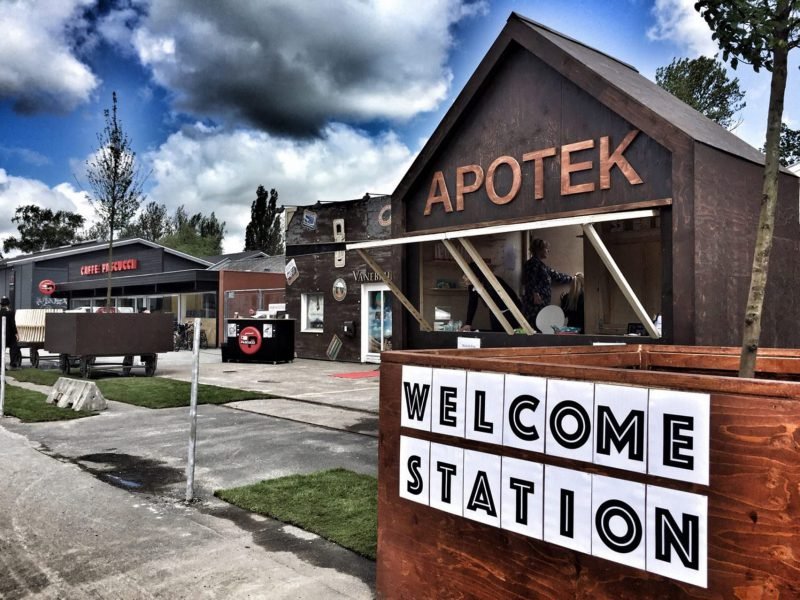Pop-Up Train Carriages Put Danish Region Back On Track
What to do with vacant urban space waiting for a decision to be taken on? Danish architecture studio AART formulated an answer to this question together with Aarhus-based non-profit organization Givisme: use it productively to the service of the local community.
Left unused for 36 years, the old railway tracks that run across Søren Frichs Vej, a former industrial area in Aarhus, Denmark, have been put to new use by AART and Givisme. By creating small pinewood carriages housing a single-room hotel, a public greenhouse, and a pharmacy, as well as little boutiques, polling booths, and pop-up bars, the organizations aim to reinject life and activity into the area before it will become the site of residential development later this year.


Interior of the pop-up hotel carriage
The area of Søren Frichs Vej is no exception — with the city of Aarhus growing quickly, many previously industrial parts of the city are transformed into residential areas. In a lot of other cities we see the same thing happening. Decision-making on such transformational developments, however, can be rather slow, causing areas like that of Søren Frichs Vej to be trapped in a form of urban transformational limbo in the meanwhile.


People mingling around the pharmacy
With their pop-up train carriage initiative, AART and Givisme do not only provide the railway tracks with a more lively look, they also offer the citizens of Aarhus a great opportunity to get involved in the making and shaping of their city. The organizations namely invited people from various ages and backgrounds to help build the pop-up carriages, with most of the building materials donated by local partners.

Building the carriages in process

Citizens helped during the buildup
According to the architects of the carriages, the project therefore is a good example of how “temporary architecture can provide new perspectives on a community-based and citizen-involving urban development.” Then the inevitable question arises: which project is put on track next?
Images courtesy of AART



